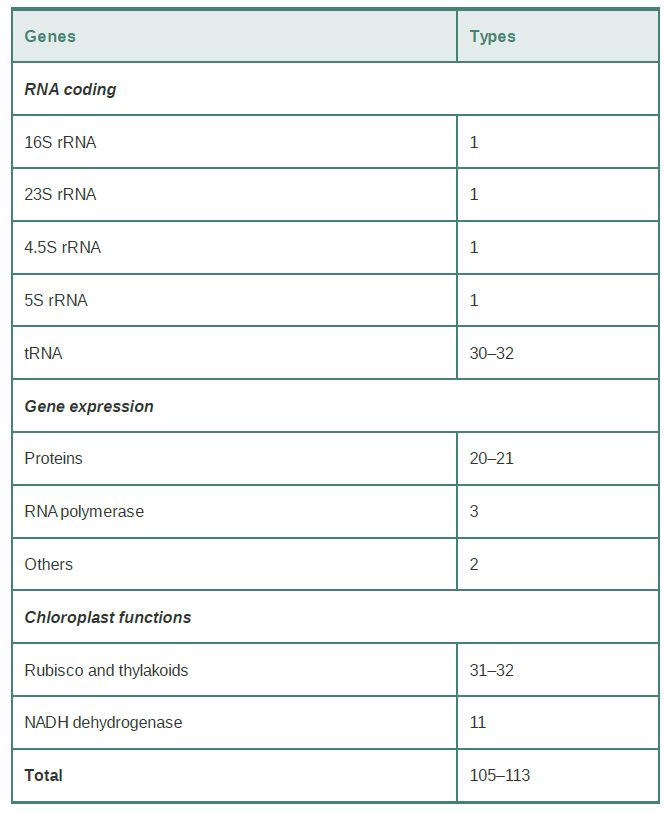

النبات

مواضيع عامة في علم النبات

الجذور - السيقان - الأوراق

النباتات الوعائية واللاوعائية

البذور (مغطاة البذور - عاريات البذور)

الطحالب

النباتات الطبية


الحيوان

مواضيع عامة في علم الحيوان

علم التشريح

التنوع الإحيائي

البايلوجيا الخلوية


الأحياء المجهرية

البكتيريا

الفطريات

الطفيليات

الفايروسات


علم الأمراض

الاورام

الامراض الوراثية

الامراض المناعية

الامراض المدارية

اضطرابات الدورة الدموية

مواضيع عامة في علم الامراض

الحشرات


التقانة الإحيائية

مواضيع عامة في التقانة الإحيائية


التقنية الحيوية المكروبية

التقنية الحيوية والميكروبات

الفعاليات الحيوية

وراثة الاحياء المجهرية

تصنيف الاحياء المجهرية

الاحياء المجهرية في الطبيعة

أيض الاجهاد

التقنية الحيوية والبيئة

التقنية الحيوية والطب

التقنية الحيوية والزراعة

التقنية الحيوية والصناعة

التقنية الحيوية والطاقة

البحار والطحالب الصغيرة

عزل البروتين

هندسة الجينات


التقنية الحياتية النانوية

مفاهيم التقنية الحيوية النانوية

التراكيب النانوية والمجاهر المستخدمة في رؤيتها

تصنيع وتخليق المواد النانوية

تطبيقات التقنية النانوية والحيوية النانوية

الرقائق والمتحسسات الحيوية

المصفوفات المجهرية وحاسوب الدنا

اللقاحات

البيئة والتلوث


علم الأجنة

اعضاء التكاثر وتشكل الاعراس

الاخصاب

التشطر

العصيبة وتشكل الجسيدات

تشكل اللواحق الجنينية

تكون المعيدة وظهور الطبقات الجنينية

مقدمة لعلم الاجنة


الأحياء الجزيئي

مواضيع عامة في الاحياء الجزيئي


علم وظائف الأعضاء


الغدد

مواضيع عامة في الغدد

الغدد الصم و هرموناتها

الجسم تحت السريري

الغدة النخامية

الغدة الكظرية

الغدة التناسلية

الغدة الدرقية والجار الدرقية

الغدة البنكرياسية

الغدة الصنوبرية

مواضيع عامة في علم وظائف الاعضاء

الخلية الحيوانية

الجهاز العصبي

أعضاء الحس

الجهاز العضلي

السوائل الجسمية

الجهاز الدوري والليمف

الجهاز التنفسي

الجهاز الهضمي

الجهاز البولي


المضادات الميكروبية

مواضيع عامة في المضادات الميكروبية

مضادات البكتيريا

مضادات الفطريات

مضادات الطفيليات

مضادات الفايروسات

علم الخلية

الوراثة

الأحياء العامة

المناعة

التحليلات المرضية

الكيمياء الحيوية

مواضيع متنوعة أخرى

الانزيمات
The Chloroplast Genome Encodes Many Proteins and RNAs
المؤلف:
JOCELYN E. KREBS, ELLIOTT S. GOLDSTEIN and STEPHEN T. KILPATRICK
المصدر:
LEWIN’S GENES XII
الجزء والصفحة:
11-3-2021
2856
The Chloroplast Genome Encodes Many Proteins and RNAs
KEY CONCEPT
-Chloroplast genomes vary in size, but are large enough to encode 50 to 100 proteins as well as the rRNAs and tRNAs.
What genes are carried by chloroplasts? Chloroplast DNAs vary in length from about 120 to 217 kb (the largest in geranium). The sequenced chloroplast genomes (more than 200 in total) have 87 to 183 genes. TABLE 1 summarizes the functions encoded by the chloroplast genome in land plants. There is more variation in the chloroplast genomes of algae.
TABLE 1 The chloroplast genome in land plants encodes 4 rRNAs, 30 tRNAs, and about 60 proteins .

The chloroplast genome is generally similar to that of mitochondria, except that there are more genes. The chloroplast genome encodes all the rRNAs and tRNAs needed for protein synthesis in the chloroplast. The ribosome includes two small rRNAs in addition to the major ones. The tRNA set can include all of the necessary genes. The chloroplast genome encodes about 50 proteins, including RNA polymerase and ribosomal proteins. Again, the rule is that organelle genes are transcribed and translated within the organelle. About half of the chloroplast genes encode proteins involved in protein synthesis.
Introns in chloroplasts fall into two general classes. Those in tRNA genes are usually (although not inevitably) located in the anticodon loop, like the introns found in yeast nuclear tRNA genes . Those in protein-coding genes resemble the introns of mitochondrial genes . This places the endosymbiotic event at a time in evolution before the separation of prokaryotes with
uninterrupted genes.
The chloroplast is the site of photosynthesis. Many of its genes encode proteins of photosynthetic complexes located in the thylakoid membranes. The constitution of these complexes shows a different balance from that of mitochondrial complexes. Although some complexes are like mitochondrial complexes in that they have some subunits encoded by the organelle genome and some by the nuclear genome, other chloroplast complexes are encoded entirely by one genome. For example, the gene for the large subunit of ribulose bisphosphate carboxylase (RuBisCO, which catalyzes the carbon fixation reaction of the Calvin cycle), rbcL, is contained in the chloroplast genome; variation in this gene is frequently used as a basis for reconstructing plant phylogenies. However, the gene for the small RuBisCO subunit, rbcS, is usually carried in the nuclear genome. On the other hand, genes for photosystem protein complexes are found on the chloroplast genome, whereas those for the light-harvesting complex (LHC) proteins are nuclear encoded.
 الاكثر قراءة في مواضيع عامة في الاحياء الجزيئي
الاكثر قراءة في مواضيع عامة في الاحياء الجزيئي
 اخر الاخبار
اخر الاخبار
اخبار العتبة العباسية المقدسة

الآخبار الصحية















 قسم الشؤون الفكرية يصدر كتاباً يوثق تاريخ السدانة في العتبة العباسية المقدسة
قسم الشؤون الفكرية يصدر كتاباً يوثق تاريخ السدانة في العتبة العباسية المقدسة "المهمة".. إصدار قصصي يوثّق القصص الفائزة في مسابقة فتوى الدفاع المقدسة للقصة القصيرة
"المهمة".. إصدار قصصي يوثّق القصص الفائزة في مسابقة فتوى الدفاع المقدسة للقصة القصيرة (نوافذ).. إصدار أدبي يوثق القصص الفائزة في مسابقة الإمام العسكري (عليه السلام)
(نوافذ).. إصدار أدبي يوثق القصص الفائزة في مسابقة الإمام العسكري (عليه السلام)


















